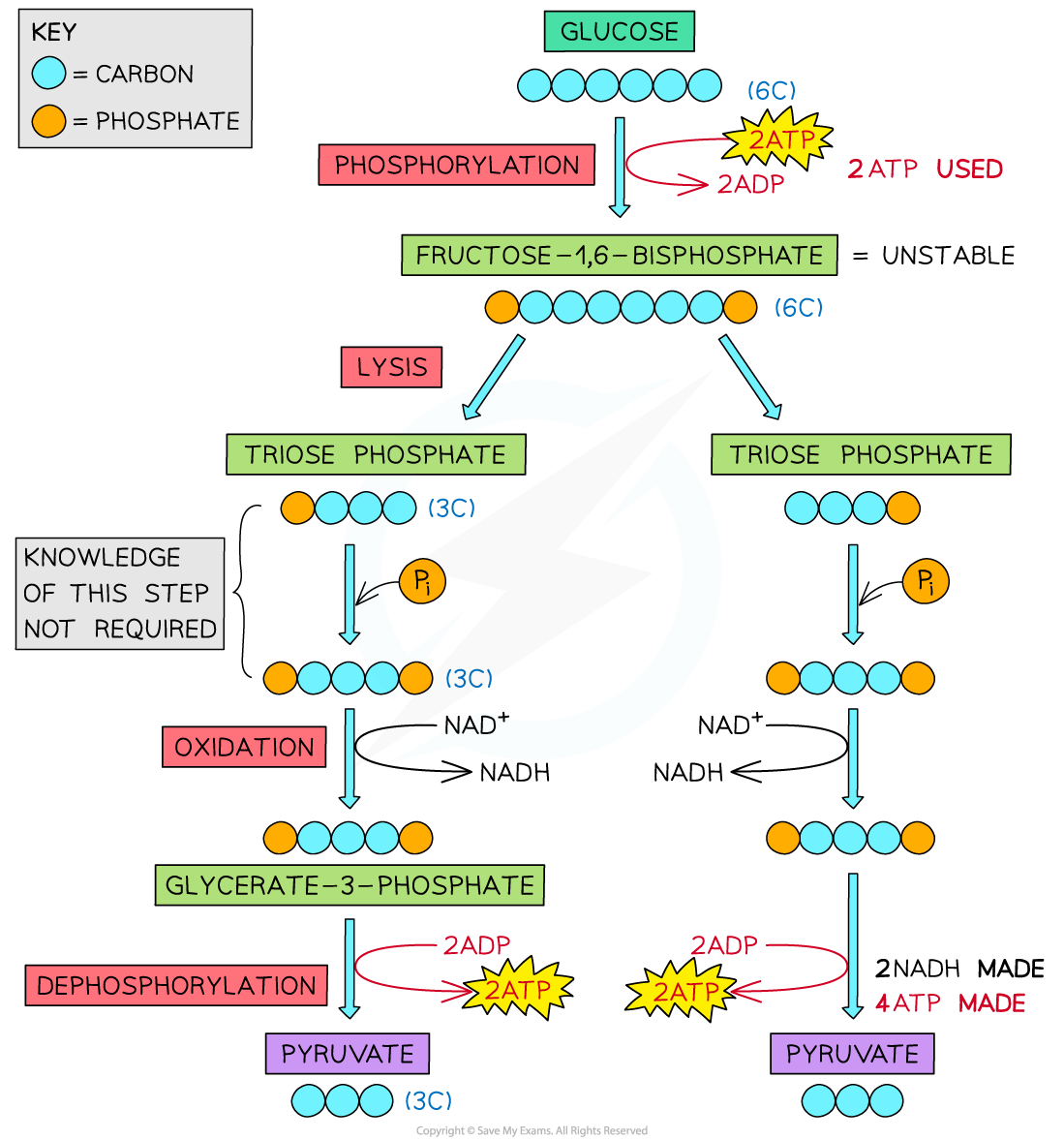Glycolysis
- Glycolysis is the first stage of respiration
- It takes place in the cytoplasm of the cell and involves:
- Trapping glucose in the cell by phosphorylating the molecule
- Splitting the glucose molecule in two
- It results in the production of
- Two pyruvate (3 carbon/3C) molecules
- Net gain two ATP (Four ATP are produced in total but two are used during the reactions of glycolysis)
- Two reduced NAD
Steps of glycolysis
- Phosphorylation: glucose (6C) is activated by phosphorylation from two ATP to form fructose-1,6-bisphosphate (6C)
- This makes the 6C molecule less stable and therefore more reactive
Glucose + 2ATP → Fructose-1,6-bisphosphate
- Lysis
- Fructose-1,6-bisphosphate (6C) splits into two molecules of triose phosphate (3C)
Fructose-1,6-bisphosphate → 2 Triose phosphate
- Oxidation:
- Hydrogen is removed from each molecule of triose phosphate by dehydrogenase enzyme and transferred to coenzyme NAD to form two reduced NAD
- Triose phosphate is oxidised to for another 3C molecule glycerate-3-phosphate
2 Triose phosphate →2 Glycerate-3-phosphate
4H + 2NAD → 2NADH + 2H+
- Dephosphorylation
- Phosphates are transferred from the intermediate substrate molecules to form four ATP through substrate-linked phosphorylation
4Pi + 4ADP → 4ATP
- Pyruvate is produced
- The end product of glycolysis which can be used in the next stage of respiration
2 Glycerate-3-phosphate → 2 Pyruvate

Glycolysis, the formation of two pyruvate molecules from one glucose sugar molecule
Exam Tip
It may seem strange that ATP is used and also produced during glycolysis. At the start ATP is used to make glucose more reactive (it is usually very stable) and to lower the activation energy of the reaction.
You may see 4H (four hydrogens) also written as 2H+ + 2e-
You do not need to know all the intermediate compounds of glycolysis apart from TP and G3P. The starting reactant, fructose-1,6-bsiphosphate, and the product, pyruvate, in this chain reaction you do need to be able to name also.